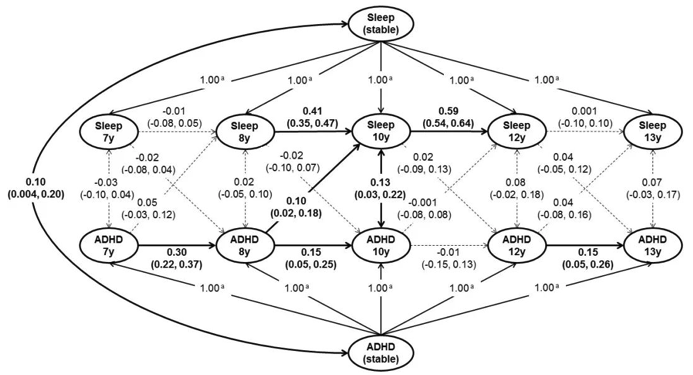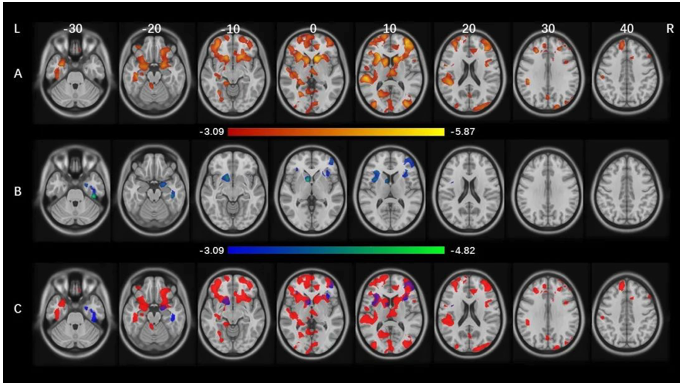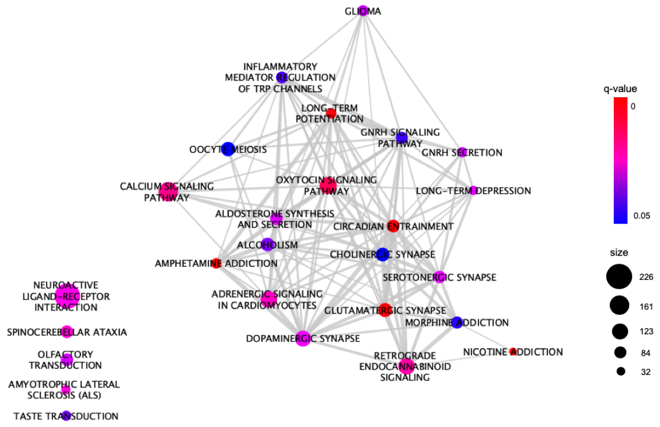Attention-Deficit/Hyperactivity Disorder (ADHD) is common in children, and often comorbid with sleep problems, producing negative impacts on children’s neurodevelopment, quality of life, academic performance and increasing the risk of accidents.
Recently, working with researchers from University of Cambridge and University of Ottawa, professor Jianfeng Feng and Dr Qiang Luo’s research teams in the institute of science and technology for brain-inspired intelligence, Fudan University have made important advances in the comorbidity of ADHD and sleep disturbance. They found neuroimaging evidence of early ADHD symptoms contributing to later sleep problems, and related biological processes. This study has been published in Biological Psychiatry at March 31, entitled “What is the Link between Attention-Deficit/Hyperactivity Disorder and Sleep Disturbance? A multimodal examination of longitudinal relationships and brain structure using large-scale population-based cohorts”.
In order to explore the casual relationships between ADHD and sleep disturbance, this study used data fromthe Quebec Longitudinal Study of Child Development (Quebec, Canada) and the Adolescent Brain Cognitive Development, and found more severe ADHD symptoms were associated with more later sleep problems by casual inference model (Figure 1).

Figure1: ADHD symptoms contribute to sleep problems in random-intercepts cross-lagged panel model.
Next, in order to understand the underlying neurobiological mechanisms, researchers used neuroimaging data (n=3515) to find brain regions associated with ADHD symptoms and sleep disturbance. The common regions were mainly located in the salience/ventral attention systems (Figure 2). Less gray matter volumes in these regions were associated with more severe ADHD symptoms, which in turn led to more sleep problems later.

Figure 2: less gray matter volumes in regions such as inferior frontal gyrus and caudate were associated with more severe ADHD symptoms and sleep problems.
Using transcriptomic analysis, the researchers found some special genes involved in biological processes such as neurotransmission and circadian entrainment were more expressed in these brain regions (Figure 3), further explaining the neuroimaging findings.

Figure 3: overexpressed genes in key brain regions are enriched in biological processes such as neurotransmission and circadian entrainment.
Barbara Sahakian, the fellow of the British Academy and the Academy of Medical Sciences,distinguishedprofessor of Fudan University, honorary doctorate of University of Cambridge, professor of department of psychiatry, said:“ADHD often comorbid with sleep disturbances canproduce profound disruption in daily life, impact negatively on quality of life of both the child and family, and produce worse academic outcomes.”
This study focused on the comorbidity of ADHD and sleep disturbance, used longitudinal cohorts and casual statistic model, found ADHD symptoms contributed to sleep problems in school-aged children, and implicated the underlying mechanisms. Dr Qiang Luo, one of the main researchers, said: “The most important thing is that we found the related brain structures and biological processes.”
According to professor Jianfeng Feng, these findings may help develop and design new treatments for early ADHD to reduce ADHD symptoms and sleep problems.
Chun Shen, a PhD candidate in the institute of science and technology for brain-inspired intelligence, Fudan University, and Dr Samuel Chamberlain, a lecturer in University of Cambridge are the co-first authors, and professor Jianfeng Feng and Dr Qiang Luo are the co-corresponding authors. This study is funded by the National Natural Science Foundation of China, the Key Project of Shanghai Science & Technology, Shanghai Municipal Science and Technology Major Project and so on.
ENDS
Paper available to view:https://www.sciencedirect.com/science/article/pii/S0006322320313810

